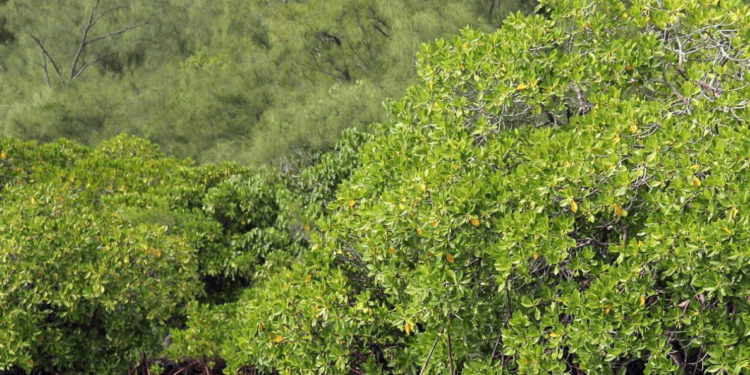On the occasion of the International Day for the Conservation of Mangrove Ecosystem, the Indira Gandhi Zoo in Vizag conducted a webinar on the topic ‘Conservation of Mangrove Ecosystem’. The webinar was addressed by Mr. Anant Shankar IFS, District Forest Officer, Visakhapatnam, and Dr. Ravi Shankar Thupalli, F.E.S – Independent International Management Consultant. Mangroves are trees and shrubs that grow only in tropical and subtropical latitudes near the equator. They are usually around rivers and have some roots that grow above the ground.
Mr. Anant Shankar presented the work the Andhra Pradesh Forest Department has been doing, over the last three or four years, regarding the restoration of the mangrove ecosystem. The Godavari and Krishna Delta are the two areas where mangroves are found predominantly in the State. The Godavari mangroves consist of 34 species of which 16 are true mangrove species and 18 are pseudo. The Krishna Delta has over 20 species of mangroves. Talking about the mangrove restoration, the officer said it is one of the most technical and tedious processes. Mr. Shankar says “It involves checking the pH level, salinity, soil type, tidal water level, frequency of tidal inundation and finally whether the vegetation indicator exists at the site.” He further talked about the various methods used to restore mangroves. The methods included setting up mangrove nurseries and Mangrove Genetic Resources Conservation Centres. Mr. Shankar also took the audience through the impact of mangrove restoration. He says “Mangrove restoration increases the mangrove cover density, secures livelihood, provides economic benefits to locals and acts as a barrier against tropical cyclones and tsunamis”. The presentation was immersed with pictures and videos to replicate the experience of visiting a mangrove forest on this day.
During the webinar organised by Vizag Zoo, Dr. Ravi Shankar went length and breadth into the details of Hope Island, Bay of Bengal, Godavari mangroves, and the Gautami Godavari river to explain the mangrove stretch in Andhra Pradesh state. Talking about the benefits of the mangroves, Dr. Shankar elucidates, with examples, the various incidents in the past that saved lives and livelihoods. The mangroves of Godavari significantly helped reduce the impact during the 1996 cyclones and 2004 tsunami. Adding to the aforesaid, Dr. Shankar says “It was only the spatial distribution and density of the mangroves that came to the rescue”. Speaking about the goods and service resources the mangroves create, Dr. Ravi Shankar mentions that about 5,000 fishermen fish in mangroves, and 3,400 cattle graze in mangroves annually. The mangroves are also used for firewood, fencing, fodder, and house building.
After the presentations, the house was open to Q&A. Several questions were raised directly to Mr. Anant Shankar and Dr. Ravi Shankar.
The IGZP organizers were overwhelmed with the participation and thanked the audience for their time. Last week, the zoo reopened for visitors after being closed due to the second wave of the pandemic.










Discussion about this post